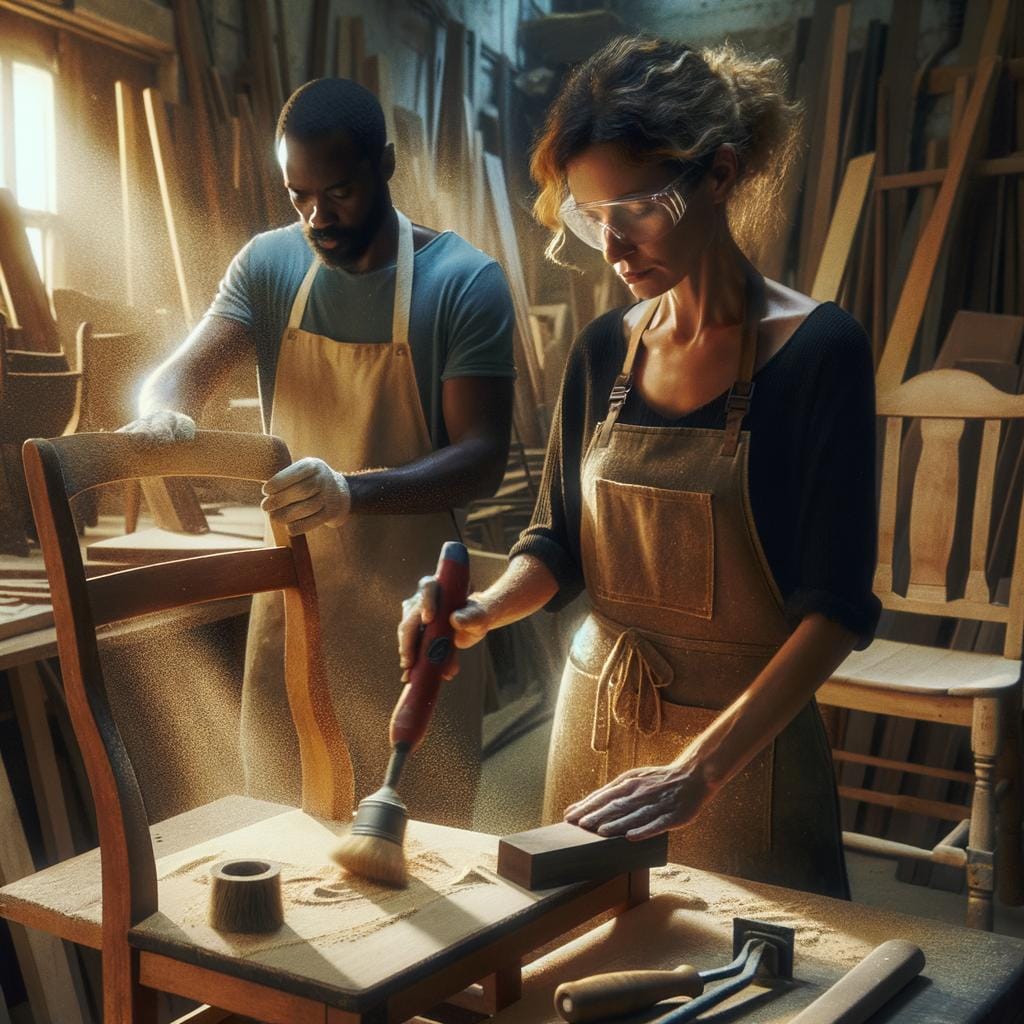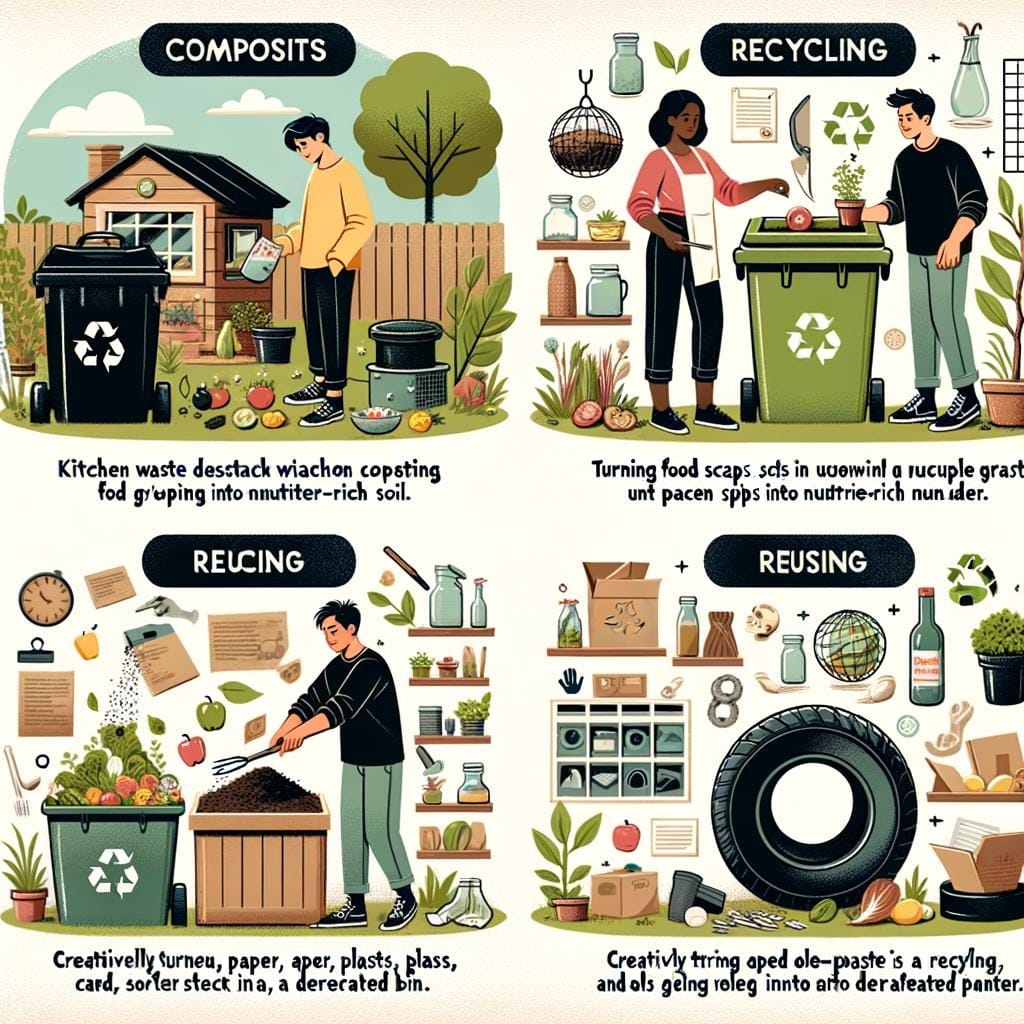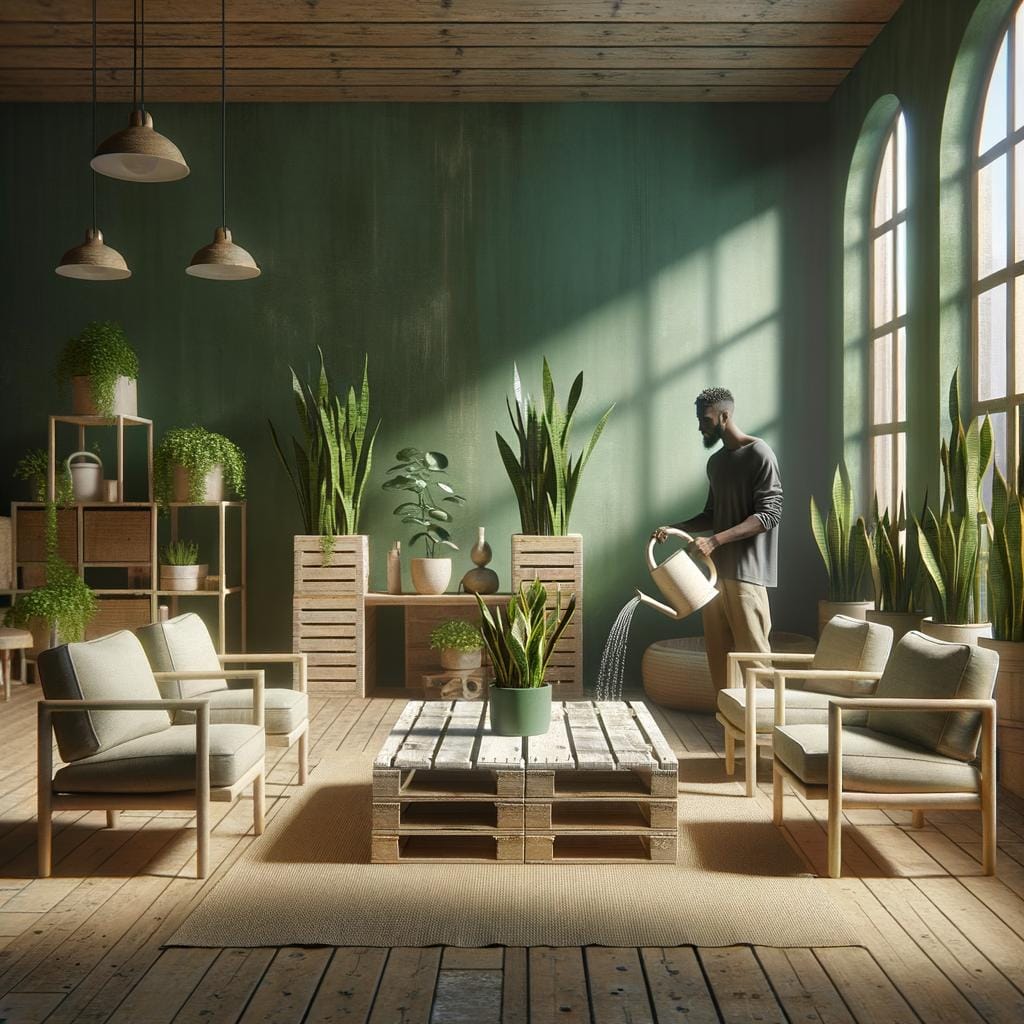Repurposing old furniture has become a popular and sustainable DIY trend that allows individuals to breathe new life into tired pieces while also reducing waste and saving money. Whether you are looking to add a unique touch to your home decor or simply want to be more environmentally conscious, repurposing old furniture offers a creative way to achieve both.
Not only does repurposing old furniture offer a cost-effective alternative to buying brand-new pieces, but it also helps in minimizing the environmental impact of mass production and disposal of furniture. By giving old items a fresh makeover, individuals can contribute to the effort of sustainability by extending the lifespan of these pieces instead of sending them to landfills.
For those interested in exploring the world of furniture repurposing, this article will provide insights on where to find quality pieces, inspiration for upcycling projects, essential tools and materials needed for DIY projects, as well as maintenance tips to ensure your repurposed furniture stays looking great for years to come. Join the growing community of eco-conscious DIY enthusiasts and start transforming old furniture into unique works of art.
Benefits of Repurposing Old Furniture
Repurposing old furniture is not only a sustainable DIY trend but also a great way to save money while benefiting the environment. By giving old furniture pieces a new lease on life, you are reducing waste by keeping them out of landfills. This practice aligns perfectly with the principles of reduce, reuse, and recycle, leading to a more eco-friendly lifestyle. Additionally, repurposing old furniture allows you to personalize your living space with unique pieces that have character and history.
There are several ways in which repurposing old furniture can help you save money. Instead of buying brand new pieces at high prices, you can often find quality items at thrift stores, garage sales, or online marketplaces for a fraction of the cost.
With some creativity and elbow grease, you can transform these second-hand finds into beautiful and functional pieces that add personality to your home décor. Not only does this save you money upfront, but it also increases the value of the piece through your own craftsmanship.
When repurposing old furniture, consider the environmental impact of your choices. Opting for non-toxic paints and sustainable materials can further reduce your carbon footprint while creating a healthier indoor environment for you and your family.
By incorporating eco-friendly practices into your DIY projects, such as using reclaimed wood or upcycling materials from other sources, you are making a positive contribution towards conservation efforts. Embracing the art of repurposing old furniture is not just about creativity and saving money – it’s also about making a difference in our world through sustainable living practices.
- Reduce waste by keeping old furniture out of landfills
- Save money by finding quality pieces at thrift stores or garage sales
- Add personality to your home décor with unique repurposed items
- Opt for non-toxic paints and sustainable materials
- Use reclaimed wood or upcycle materials from other sources
- Create a healthier indoor environment for you and your family
Finding Quality Pieces
When it comes to repurposing old furniture, one of the key aspects is finding quality pieces to work with. Thrifting, visiting garage sales, and exploring online marketplaces are great ways to discover hidden gems that can be transformed into unique and beautiful pieces for your home. Here are some tips on how to find the best furniture pieces for your repurposing projects:
- Thrifting: Visiting thrift stores and vintage shops can lead you to stumble upon old furniture pieces at affordable prices. Keep an open mind and look for items with good bones that can be easily refreshed with a little creativity.
- Garage Sales: Scouring local garage sales can also yield great finds for repurposing projects. Be on the lookout for sturdy pieces that can be upcycled into something new and stylish.
- Online Marketplaces: Websites like Craigslist, Facebook Marketplace, and eBay are treasure troves of second-hand furniture waiting to be repurposed. You can find unique items from sellers looking to part ways with their old furniture.
Repurposing old furniture not only gives you the opportunity to unleash your creativity but also allows you to contribute to a sustainable way of living by giving new life to preloved pieces. By finding quality items through thrifting, garage sales, or online marketplaces, you not only save money but also reduce waste by preventing these items from ending up in landfills.
So next time you’re on the hunt for furniture pieces, consider repurposing old ones for a more eco-friendly and budget-conscious approach.
Inspiration for Repurposing Projects
When it comes to repurposing old furniture, the possibilities are truly endless. Upcycling, the process of transforming old and unwanted items into something new and beautiful, has become a popular trend in the world of DIY home decor. Whether you’re looking to add a unique touch to your living space or simply want to save money while being eco-friendly, repurposing old furniture is a great way to unleash your creativity.
Upcycling Ideas
One of the most popular upcycling ideas for old furniture is turning an outdated dresser into a chic kitchen island. By adding some wheels for mobility and a fresh coat of paint, you can breathe new life into an old piece and create a functional and stylish addition to your home. Another creative upcycling idea is repurposing an old wooden ladder as a rustic bookshelf.
Simply lean the ladder against a wall, add some shelves between the rungs, and voila. You have a unique storage solution that adds character to any room.
Trends in Upcycling
In recent years, there has been a surge in upcycling trends that focus on sustainability and uniqueness. One popular trend is the use of natural materials like reclaimed wood and bamboo in repurposing projects. These materials not only add warmth and texture to your furniture pieces but also help reduce waste and promote environmental conservation.
Another trend that has gained momentum is the incorporation of bold colors and patterns in upcycled furniture. From geometric designs to floral motifs, adding a pop of color can instantly transform an otherwise dull piece into a statement-making focal point in your home.
Personalizing Your Projects
When it comes to upcycling old furniture, the key is to let your imagination run wild and personalize your projects according to your taste and style. Whether you prefer a minimalist look or love bohemian aesthetics, there are endless possibilities for customizing your repurposed pieces.
Don’t be afraid to experiment with different techniques like distressing, stenciling, or decoupage to create one-of-a-kind furniture items that reflect your personality. Remember, the beauty of repurposing old furniture lies in its ability to tell a story and showcase your individuality through sustainable design choices.
Tools and Materials Needed for DIY Furniture Repurposing
Repurposing old furniture is not only a creative and fun DIY project, but it also promotes sustainability by giving new life to items that would otherwise end up in the landfill. When embarking on a furniture repurposing project, it is essential to have the right tools and materials to ensure a successful outcome. Some must-have tools include sandpaper or a sander for prepping surfaces, paintbrushes or sprayers for adding color, and screwdrivers or drills for any necessary repairs.
In addition to tools, selecting the right materials is crucial for achieving your desired repurposed furniture look. Depending on your project, you may need wood stain or paint for refurbishing wooden pieces, fabric for reupholstering chairs or sofas, or decorative knobs and handles for adding a personal touch. It’s important to choose high-quality materials that will withstand everyday use and bring your vision to life.
For those looking to save money on their repurposing projects, consider visiting thrift stores, garage sales, or online marketplaces to find quality furniture pieces at affordable prices. Not only will you be able to repurpose these items into something unique and stylish, but you’ll also be contributing to the circular economy by reducing waste and supporting secondhand markets.
By investing in the right tools and materials while sourcing pre-loved furniture pieces, you can embark on a fulfilling journey of repurposing old furniture while making a positive impact on the environment.
| Tools | Materials |
|---|---|
| Sandpaper/sander | Wood stain/paint |
| Paintbrushes/sprayers | Fabric/upholstery material |
| Screwdrivers/drills | Decorative knobs/handles |
Step-by-Step Guide to Repurposing Old Furniture
Repurposing old furniture is a fantastic way to breathe new life into tired pieces and create something unique for your home. In this section, we will focus on the crucial steps of sanding, painting, and reupholstering that are necessary for any successful furniture upcycling project. These processes are instrumental in transforming an old piece into a fresh and stylish addition to your living space.
Sanding
The first step in repurposing old furniture is usually sanding. This process involves removing the old finish or paint from the piece to create a smooth surface for painting or staining. Start by using coarse-grit sandpaper to eliminate any rough spots or imperfections on the furniture. Gradually move on to finer grits until the surface is nice and smooth. Sanding not only improves the appearance of the piece but also helps paint adhere better.
Painting
Once you have sanded down your furniture, it’s time to bring some color into play with paint. Choose a high-quality paint that is suitable for the material of your piece – whether wood, metal, or plastic. Consider using chalk paint for a trendy matte finish or spray paint for a quick and even application.
Apply several thin coats of paint rather than one thick coat to avoid drips and uneven coverage. Get creative with colors and patterns to make your repurposed furniture truly stand out.
Reupholstering
If your furniture piece has cushions or fabric elements, reupholstering can give it a whole new look. Remove the old fabric carefully and assess the condition of the padding underneath. Replace any worn-out foam or batting before applying new upholstery fabric.
Use a staple gun to secure the fabric in place neatly around corners and edges. Reupholstering allows you to customize your old furniture pieces with modern fabrics that suit your style, making them feel like brand-new additions to your home.
Before and After Showcase
Repurposing old furniture is not just a way to give new life to tired pieces, but it also allows individuals to showcase their creativity and design skills. The process of transforming an old, worn-out piece of furniture into something fresh and unique can be incredibly rewarding. Whether it’s a vintage dresser, a forgotten chair, or a outdated dining table, the possibilities for repurposing old furniture are endless.
One of the most satisfying aspects of repurposing old furniture is being able to see the dramatic before and after transformations. A dull chest of drawers can become a vibrant statement piece with some sanding, painting, and new hardware.
An old coffee table that has seen better days can be turned into a stylish and functional ottoman with some upholstery work and fabric. The satisfaction that comes from taking something discarded or unwanted and turning it into a beautiful focal point in your home is truly unmatched.
Not only does repurposing old furniture allow for creative expression and budget-friendly decorating, but it also contributes to sustainability by reducing waste. Instead of throwing away furniture that may still have good bones but just needs a little love, repurposing gives these pieces a second chance at life. By incorporating eco-friendly practices such as using non-toxic paints and sustainable materials in your projects, you can feel good about not only saving money but also helping the environment.
| Benefits of Furniture Repurposing | Details |
|---|---|
| Cost-effective | Repurposing old furniture saves money compared to buying new pieces. |
| Sustainability | Helps reduce waste by giving old furniture new life. |
| Creative Outlet | Allows for personal expression through design and DIY projects. |
Maintenance Tips for Repurposed Furniture
Repurposing old furniture not only allows you to unleash your creativity but also contributes to a sustainable lifestyle by reducing waste and minimizing the demand for new furniture production. However, once you have successfully revamped your old pieces, it is important to maintain them properly to ensure they continue looking great for years to come.
One fundamental maintenance tip for repurposed furniture is regular cleaning. Dust and dirt can accumulate on the surfaces of your pieces, diminishing their visual appeal and potentially causing damage over time. Wiping down your repurposed furniture with a soft, damp cloth on a consistent basis can help preserve its appearance and prevent grime buildup.
In addition to regular cleaning, it is crucial to protect repurposed furniture from excessive moisture and direct sunlight. Moisture can warp wood and cause mold growth, while prolonged exposure to sunlight can fade paint or upholstery. Position your repurposed pieces away from windows or use curtains/blinds to shield them from harsh sunlight.
Furthermore, consider using coasters or placemats to prevent water rings on wooden surfaces. Taking these preventative measures will extend the lifespan of your repurposed furniture and maintain its aesthetic appeal.
Eco-Friendly Practices in Furniture Repurposing
Repurposing old furniture not only adds a unique touch to your home decor but also contributes to sustainability and environmental conservation. By giving new life to old pieces, you are reducing waste and minimizing the need for new furniture production, which can be resource-intensive. Embracing this DIY trend of repurposing old furniture allows you to express your creativity while making conscious choices for the planet.
One important aspect of eco-friendly practices in furniture repurposing is the use of non-toxic paints and sustainable materials. When selecting paint for your projects, opt for low-VOC or VOC-free options to minimize harmful emissions. Additionally, consider using reclaimed or recycled materials to further reduce your environmental impact. By choosing eco-conscious products, you can enjoy the process of repurposing old furniture while knowing that you are making a positive difference for the planet.
Incorporating eco-friendly practices into your furniture repurposing projects is not only beneficial for the environment but also for your health and well-being. By choosing non-toxic paints and sustainable materials, you are creating a safer indoor environment for yourself and your loved ones.
Furthermore, by embracing the principles of sustainability in your DIY projects, you are promoting a culture of mindful consumption and responsible stewardship of resources. So next time you embark on a repurposing journey, remember the importance of using non-toxic paints and sustainable materials to create beautiful, environmentally-friendly pieces that will stand the test of time.

Hello, I’m April Denton, your go-to expert for all things home decluttering and organization. With over a decade of experience helping individuals transform their living spaces into serene, clutter-free sanctuaries, I am passionate about the life-changing benefits of decluttering. My journey into the world of organization began out of necessity, juggling a busy career and a bustling household. I quickly realized that a well-organized home was the key to a more balanced, stress-free life.





